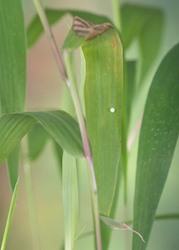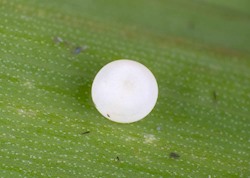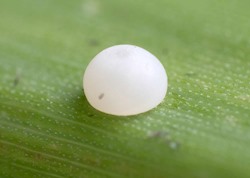Pepper and Salt Skipper Amblyscirtes hegon
Butterfly: Wingspan: ¾ - 1¼ inch (2.2 - 3.1 cm). UPPER SURFACE (dorsal) Dark reddish brown with greenish yellow flecks at forewing base. Pale "wrist bracelet" near forewing tip; a few white midwing spots. Male stigma inconspicuous. UNDER SURFACE (ventral) Brown or grayish brown with a heavy dusting of yellow green flecks ('pepper and salt"). Both wings contain white spot bands. Brown and white checkered wing fringes.
Egg: Light green, hemispherical-shaped. Eggs turn whiter with time.
Caterpillar: Pale green to grayish green with heavy white frosting; dark green line down back. Head light tan with rusty brown triangle in center of face and two rusty-brown stripes on edges of head. Collar black. First three pairs of legs (thoracic) pale. Mature caterpillars overwinter.
Chrysalis: Light yellow beige with tinge of green, especially on wing cases. Proboscis case orange beyond wing cases.
.jpg)







.jpg)




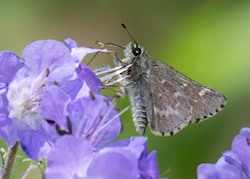
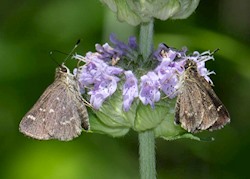

.JPG)
_Charny.jpg)
.JPG)

_Charny.jpg)
_Charny.jpg)
_Charny.jpg)


